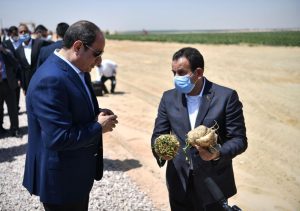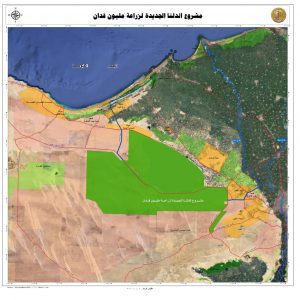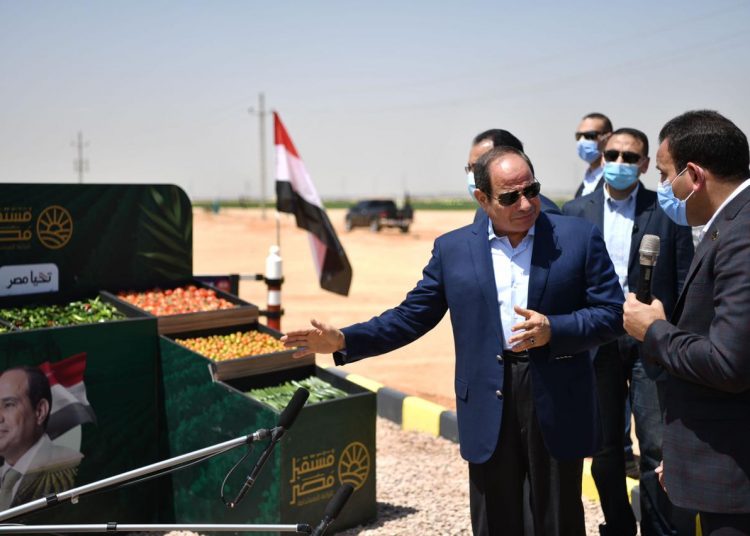The state has embarked on a number of national development projects in various fields to achieve sustainable development goals.
Among those projects is Mustaqbal Misr ‘Future of Egypt’ which will increase the area of land under cultivation, provide high-quality produce at reasonable prices, and bridge the gap between production and imports in the local market.

The project is established on an area of 500,000 feddans (acres) northwest of the Dabaah Axis.
Around 200,000 feddans (acres) have been reclaimed in the first phase of the project.
The remaining 300,000 feddans will be reclaimed in the next phases.
The site was chosen for its many geographical advantages: its proximity to ports, airports, industrial areas, and a number of main roads and axes, including the Borg el-Arab and Sphinx airports and Alexandria and Dekheila ports.
This, in turn, facilitates the transfer and access of agricultural products from the project lands to all parts of the country.
‘Future of Egypt’ is part of a bigger ‘New Delta’ venture to cultivate one million feddans along the Rod el-Farag-Dabaa Corridor.
Future of Egypt project should help develop the northwest coast region with the establishment of new agricultural and urban communities.
It also aims to establish industrial complexes concerned with agricultural production and harvesting.
‘Future of Egypt’ is expected to create more than 200,000 jobs for young people across the country.
President Abdel Fattah el Sisi made an inspection tour of the site yesterday to be briefed on the latest developments in harvesting.
The president issued directives to the authorities concerned to implement the ‘Future of Egypt’ project as per the schedules and in accordance with highest international standards.
He directed them to strengthen coordination and cooperate between the various authorities to fulfill the aims of ‘Egypt Future’ to develop agriculture and food industries.
The project is being implemented by large specialised agricultural firms affiliated to the private sector.
Future of Egypt is part of government strategy to maximise the potential productive opportunities in the field of land reclamation and farm produce.
The project is also intended to provide foreign currency.
The infrastructure and administration of the project include a fully-fledged, integrated system for mechanising agriculture and irrigation, equipped with the latest devices and techniques to complete various agricultural processes with both high quality and speed.
The agricultural land is being irrigated by pivot system. It has two power stations with a capacity of 350 megawatts, besides an internal electricity network with 200km in length and a main road network with a total length of 500 km.







Discussion about this post